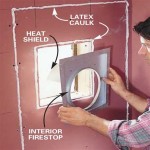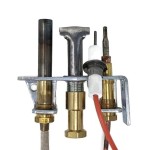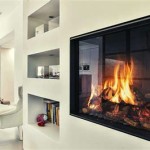Pellet Stove Insert Into Gas Fireplace: A Comprehensive Guide
Many homeowners are seeking efficient and cost-effective heating solutions for their homes. The concept of installing a pellet stove insert into an existing gas fireplace is one such solution gaining traction. This article explores the feasibility, benefits, challenges, and essential considerations associated with this conversion, offering a comprehensive overview for informed decision-making.
For years, gas fireplaces have offered ambiance and supplemental heat. However, fluctuating gas prices and concerns about environmental impact have prompted homeowners to explore alternative heating methods. Pellet stoves, known for their efficient combustion of renewable wood pellets, present an attractive alternative. Installing a pellet stove as an insert into an existing gas fireplace offers the potential to combine the convenience of an existing fireplace with the efficiency and environmental benefits of pellet heating.
Understanding Pellet Stove Inserts
A pellet stove insert is a self-contained heating unit designed to be installed within an existing fireplace. They are specifically constructed to fit into the firebox of a conventional fireplace, using the existing chimney or flue system for venting exhaust. These inserts typically include a hopper to hold the pellets, an automated feeding system, a combustion chamber, a blower to circulate heated air, and electronic controls for temperature regulation and operation.
Unlike traditional wood-burning stoves, pellet stoves use compressed biomass fuel, typically made from recycled wood waste. Pellets offer consistent density and moisture content, resulting in more complete and efficient combustion. This efficient combustion translates to higher heating efficiency and reduced emissions compared to wood-burning fireplaces or older gas fireplace models.
Pellet stove inserts come in various sizes and heat output capacities, allowing homeowners to select a model that aligns with their specific heating needs and the dimensions of their existing fireplace. Proper sizing is critical for optimal performance and preventing overheating or inadequate heating.
Feasibility of Converting a Gas Fireplace to a Pellet Stove Insert
The feasibility of installing a pellet stove insert into a gas fireplace depends on several factors related to the existing fireplace structure and local building codes. Careful assessment is crucial before undertaking such a project.
Chimney/Flue Considerations: Gas fireplaces often have smaller flue diameters compared to what is required for pellet stoves. Pellet stoves need a dedicated stainless steel liner installed within the existing chimney to properly vent exhaust and prevent creosote buildup. The existing gas flue is typically inadequate and unsafe for pellet stove exhaust. A professional chimney sweep and installer should inspect the chimney to determine its suitability for a pellet stove liner and identify any structural issues that need to be addressed.
Firebox Dimensions: The firebox of the gas fireplace must be large enough to accommodate the dimensions of the pellet stove insert. Measurements of the firebox's width, height, and depth must be taken and compared to the insert's specifications to ensure a proper fit. Adequate clearance around the insert is also necessary for proper airflow and heat dissipation.
Gas Line Removal/Capping: The existing gas line to the fireplace must be professionally disconnected and capped off to prevent gas leaks. This task should only be performed by a licensed gas fitter. Leaving the gas line active poses a significant safety hazard.
Electrical Requirements: Pellet stove inserts require a dedicated electrical outlet to power the auger, blower, and electronic controls. An electrician may need to install a new outlet near the fireplace if one is not already available. The electrical circuit must be adequately sized to handle the insert's power demands.
Building Codes and Permits: Local building codes and regulations may require permits for installing a pellet stove insert. It is essential to check with the local building department to obtain the necessary permits and ensure compliance with all applicable regulations. Inspections are often required to verify that the installation meets safety standards.
Benefits of Pellet Stove Inserts in Gas Fireplaces
Converting a gas fireplace to a pellet stove insert can offer numerous advantages for homeowners seeking improved heating efficiency, cost savings, and environmental responsibility.
Increased Heating Efficiency: Pellet stoves are significantly more efficient than most gas fireplaces. They typically achieve heating efficiencies of 75-85%, meaning that a larger percentage of the fuel's energy is converted into usable heat for the home. This increased efficiency translates to lower heating bills and reduced energy consumption.
Cost Savings: While the initial investment in a pellet stove insert and installation can be substantial, the long-term cost savings on heating bills can offset the initial expense. Wood pellets are often less expensive than natural gas or propane, particularly during periods of high gas prices. The savings depend on local fuel costs and usage patterns.
Environmental Benefits: Pellet stoves burn a renewable fuel source made from recycled wood waste. The combustion process produces lower emissions compared to wood-burning fireplaces and contributes to a smaller carbon footprint. Using wood pellets as a heating fuel can help reduce reliance on fossil fuels and promote sustainable energy practices.
Zone Heating Capability: Pellet stove inserts are effective for zone heating, allowing homeowners to heat specific areas of the home without needing to heat the entire house. This targeted heating approach can further reduce energy consumption and heating costs, particularly in larger homes or homes with poorly insulated areas.
Convenience and Ease of Use: Pellet stoves are typically equipped with automated feeding systems and electronic controls, making them relatively easy to operate. The hopper can be filled with pellets, and the stove will automatically feed the fuel into the combustion chamber as needed. Thermostats and programmable timers allow for precise temperature control and automated operation.
Challenges and Considerations
While converting a gas fireplace to a pellet stove insert offers numerous benefits, it is crucial to be aware of the potential challenges and considerations associated with this project.
Installation Costs: The installation of a pellet stove insert can be a significant expense. Costs can include the purchase of the insert, the installation of a stainless steel chimney liner, the removal and capping of the gas line, electrical work, and any necessary modifications to the fireplace surround. Obtaining multiple quotes from qualified installers is recommended to ensure competitive pricing.
Maintenance Requirements: Pellet stoves require regular maintenance to ensure optimal performance and prevent malfunctions. This maintenance includes cleaning the combustion chamber, ash removal, and periodic inspection of the auger, blower, and venting system. Neglecting maintenance can lead to reduced efficiency, increased emissions, and potential safety hazards.
Fuel Storage: Wood pellets need to be stored in a dry, protected location to prevent them from absorbing moisture. Moisture can reduce their heating value and cause problems with the stove's feeding system. Adequate storage space is a necessary consideration for homeowners considering a pellet stove insert.
Noise Levels: Pellet stoves typically generate some noise due to the operation of the auger and blower. The noise level can vary depending on the model and operating settings. Homeowners sensitive to noise should consider this factor when selecting a pellet stove insert.
Power Outages: Pellet stoves require electricity to operate. During a power outage, the stove will not function unless it is connected to a backup power source, such as a generator or battery backup system. This is a critical consideration for homeowners in areas prone to power outages.
Aesthetics: While pellet stove inserts are designed to be aesthetically pleasing, they may not match the aesthetic of the existing gas fireplace. The homeowner should consider the visual impact of the insert and ensure that it complements the style of the room.
In conclusion, converting a gas fireplace to a pellet stove insert is a complex project that requires careful planning and execution. By understanding the feasibility, benefits, challenges, and essential considerations involved, homeowners can make informed decisions and achieve a safe, efficient, and cost-effective heating solution.

Pellet Stove Inserts Turn Drafty Fireplaces Into Heaters Complete Home Concepts

Pellet Fireplace Inserts Complete Home Concepts

Pellet Fireplace Inserts Lopi Stoves Made In Usa

Pellet Stove Inserts The 1 Fireplace

Wood Stoves Pellet Gas Fireplace Inserts

Pellet Fireplace Inserts Lopi Stoves Made In Usa

Gci60 Cast Iron Pellet Stove Insert Regency

Pellet Fireplace Inserts Mountain West S

Pellet Burning Fireplace Inserts Sierra Hearth And Home

Fireplace Insert Installation Wood Inserts Gas Pellet And Electric
Related Posts








